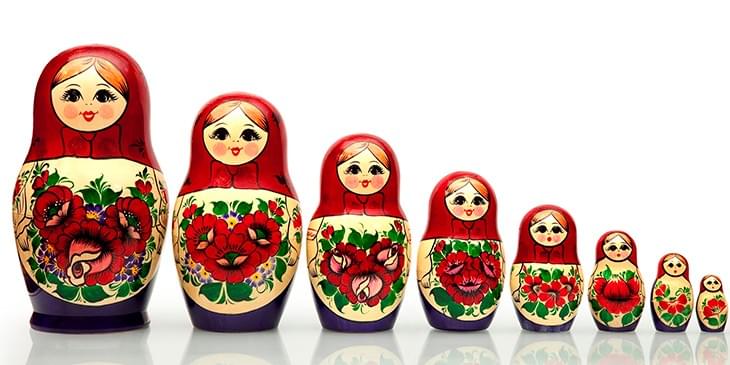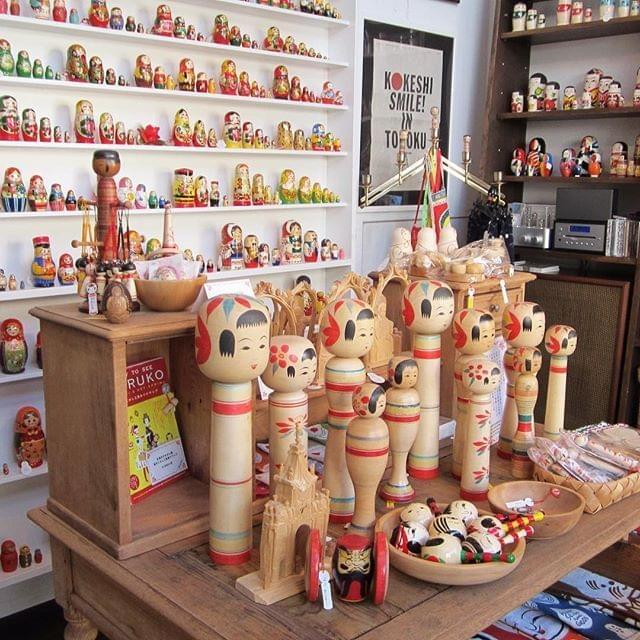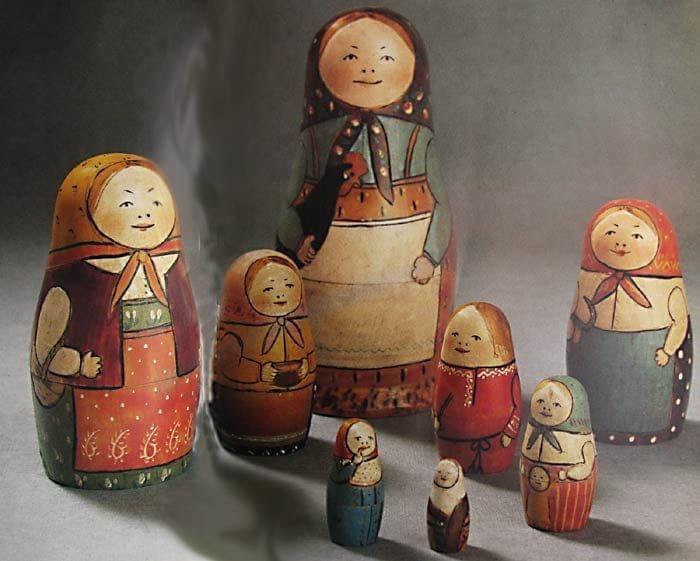It's quite fascinating to have Russian dolls (also called nesting or stacking dolls) as part of your Folk Art collection. Known by many names: nesting dolls, matryoshka dolls, babushka dolls, nested dolls, stacking dolls, Russian Nesting Dolls have captured the attention of children, adults, doll enthusiasts, and art collectors across the globe. From their introduction to the world at the Paris World Exhibition in 1900, to the modern day, the almost deceptively simple concept of a set of smaller dolls nestled within larger dolls has endured not only as a popular children's toy, or a collectible decoration, but as an icon synonymous with Russian culture.

A Brief History of the Birth of the First Russian Nesting Dolls
Completed in 1890, the first set of the Russian nesting dolls were crafted by a woodworker named Vasilii Zvyozdochkin, and painted by an artist, Sergei Malyutin. It was believed that Vasilii wanted to create a wooden doll with hidden toys inside of it. They created a wooden peasant girl clothed in a traditional Russian attire complete with a headscarf. She was named “matryoshka” meaning “little matron”, also referred to as the Rooster Girl, since she is more known as the wooden doll holding a black rooster in her arm.

Symbolism of the Matryoshka Dolls
When the early nesting dolls were created, all of them were presented with females as their biggest dolls. That is because a couple of the main symbols of the matryoshka dolls were of depicting a woman’s fertility and their motherhood. The shape of the big-bellied doll almost portrayed a mother’s stout figure and her significance in the family by the nesting of her “children” dolls inside.
Mothers play a big role in the traditional Russian family; being the bearer of life and her capability to multiply her seeds are just some of them. In the country, having a big family is considered as a common practice and even an important one; there are usually more than three children, as well as members of the extended family live under one roof with them. Each member of the family is believed to have their own unique role in the household, and it’s the mother who serves as the foundation of the home.
Babushka Doll vs Matryoshka Doll
Matryoshka came from the Latin word “mater” which means “mother”. So, it was more than fitting for the nesting dolls to be named “matryoshka dolls” because of who and what they symbolize. However, people of the west are calling them “babushka dolls” instead of the original matryoshka; and although the term babushka is still associated with Russia, the name behind that holds a completely different meaning.
Babushka means “grandmother” or “old woman”. With that being said, naming the nesting dolls as babushka dolls clearly give out the incorrect meaning of the Russian wooden toys. The dolls represent a mother’s fertility, so, it was not a fit for them to be called as such. However, some suggest that the dolls were erroneously called babushka dolls because of their headkerchiefs, as the piece of clothing is really called a babushka. Today, with the evolution of the appearance of the nesting dolls as they characterize modern people with modern attire, it wouldn’t make sense to keep calling them babushka.
Nevertheless, it is encouraged to refrain from identifying the nesting dolls as babushka dolls. Their original name “matryoshka” would do, or simply “Russian nesting dolls”.



